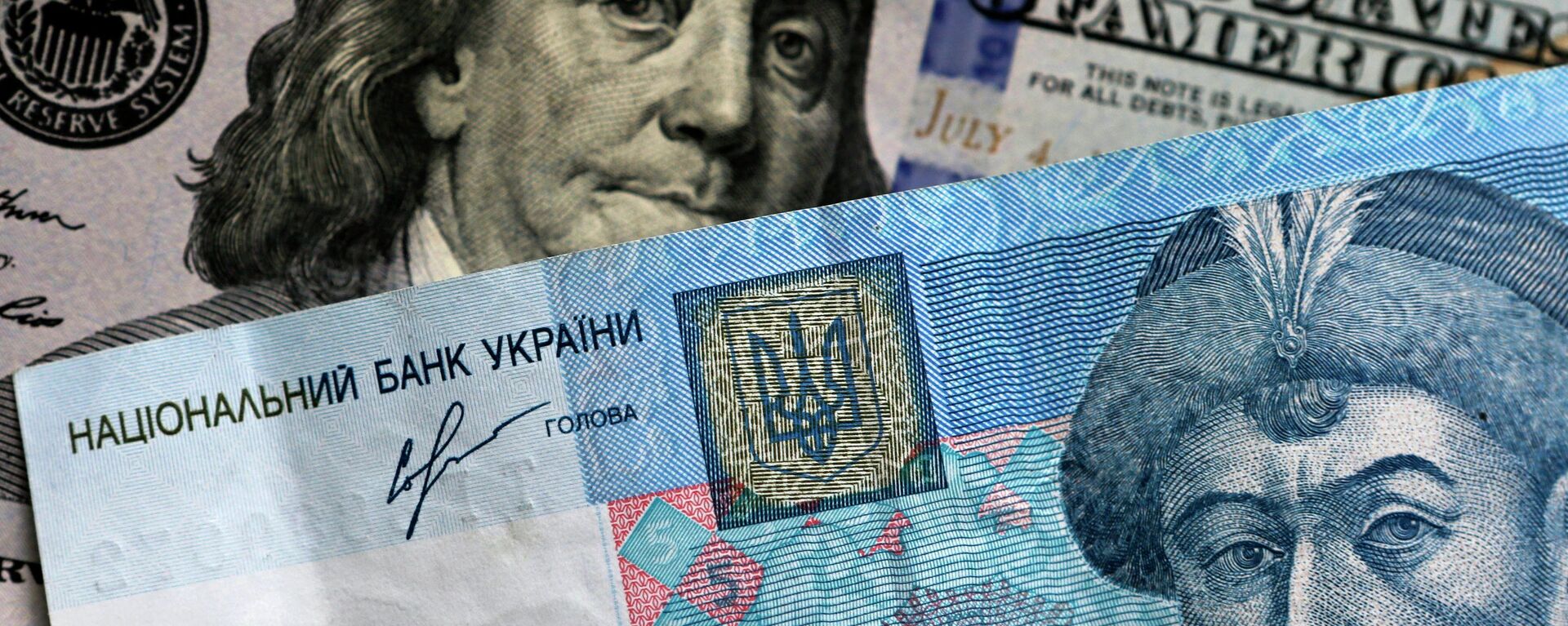https://sputnikglobe.com/20240927/ukraines-nato-sponsors-fear-theyll-run-out-of-money-to-continue-anti-russia-proxy-war-into-2025-1120319547.html
Ukraine’s NATO Sponsors Fear They'll Run Out of Money to Continue Anti-Russia Proxy War Into 2025
Ukraine’s NATO Sponsors Fear They'll Run Out of Money to Continue Anti-Russia Proxy War Into 2025
Sputnik International
Western leaders, Kiev officials and military and international affairs observers the world over have long recognized that the NATO-Russia proxy war in Ukraine would swiftly end if not for the West's desire to strategically and militarily "weaken" Russia, using Ukrainians as cannon fodder to do so.
2024-09-27T17:18+0000
2024-09-27T17:18+0000
2024-09-27T17:18+0000
world
volodymyr zelensky
imf
donald trump
kiev
ukraine
washington
nato
european union (eu)
https://cdn1.img.sputnikglobe.com/img/07e8/09/1b/1120319691_0:154:3000:1842_1920x0_80_0_0_36c9eb73c0f280cd1b38f3aab212085a.jpg
The continued delivery of NATO weaponry to Ukraine into next year is at risk due to a pressing lack of funds among the Zelensky regime’s top sponsors, policy insiders have told Bloomberg.At stake is a controversial $50 billion loan agreement generated by the profits of Russian Central Bank assets frozen in Western banks, which Washington reportedly fears could be blocked by Hungary, or whittled down. Even that sum would be enough to keep Kiev stocked up on war materiel for only half the year.That’s not counting Kiev’s economic situation, including a projected $35 billion gap in the 2025 budget, about $15 billion of which has yet to be accounted for after IMF and EU subsidies are applied. The shortfall could push Kiev into peace talks with Russia ‘from a position of weakness’, Bloomberg’s sources warned.Kiev is apparently also having a hard time convincing patrons to continue shelling out tens of billions of dollars-worth of arms for the conflict as ramped up Russian production “outpaces” the combined output of the collective West.Then there is the pressure on Zelensky that Donald Trump is expected to apply, should he win the White House in November, and the cash-poor position of Germany – Ukraine’s second-largest sponsor after the US, whose constitutional debt restrictions have already affected support. As economic troubles sweep over France, Italy and the UK, these countries may similarly reduce assistance, although the Starmer government has vowed to continue backing Kiev up to the hilt despite hard budgetary choices to make at home.The aid crunch is the second time this year that Kiev’s battlefield prospects have been challenged by its patrons’ reluctance to fork over more cash. In April, the Republican-held House of Representatives passed a $48 billion package of security aid for Ukraine after a six-month deadlock connected to the crisis at the US’s southern border.
https://sputnikglobe.com/20240926/biden-announces-nearly-8-billion-in-latest-military-aid-for-ukraine-amid-zelensky-visit-1120305101.html
https://sputnikglobe.com/20240904/ukraines-imf-paymasters-demand-currency-devaluation-toughened-tax-regime-as-kiev-drowns-in-debt-1120018809.html
kiev
ukraine
washington
Sputnik International
feedback@sputniknews.com
+74956456601
MIA „Rossiya Segodnya“
2024
News
en_EN
Sputnik International
feedback@sputniknews.com
+74956456601
MIA „Rossiya Segodnya“
Sputnik International
feedback@sputniknews.com
+74956456601
MIA „Rossiya Segodnya“
how long would ukraine last without western aid, would ukraine war continue without nato weapons aid, how much weapons aid is west giving ukraine
how long would ukraine last without western aid, would ukraine war continue without nato weapons aid, how much weapons aid is west giving ukraine
Ukraine’s NATO Sponsors Fear They'll Run Out of Money to Continue Anti-Russia Proxy War Into 2025
Western leaders, Kiev officials and military and international affairs observers the world over have long recognized that the NATO-Russia proxy war in Ukraine would swiftly end if not for the West's desire to strategically and militarily "weaken" Russia, using Ukrainians as cannon fodder to do so.
The continued delivery of NATO weaponry to Ukraine into next year is at risk due to a pressing lack of funds among the Zelensky regime’s top sponsors, policy insiders have told Bloomberg.
At stake is a
controversial $50 billion loan agreement generated by the profits of Russian Central Bank assets frozen in Western banks, which Washington reportedly fears could be blocked by Hungary, or whittled down. Even that sum would be enough to keep Kiev stocked up on war materiel for only half the year.
That’s not counting Kiev’s economic situation, including a projected $35 billion gap in the 2025 budget, about $15 billion of which has yet to be accounted for after IMF and EU subsidies are applied. The shortfall could push Kiev into peace talks with Russia ‘from a position of weakness’, Bloomberg’s sources warned.

26 September 2024, 21:21 GMT
Kiev is apparently also having a hard time convincing patrons to continue shelling out tens of billions of dollars-worth of arms for the conflict as ramped up Russian production “outpaces” the combined output of the collective West.
Then there is the pressure on Zelensky that Donald Trump is expected to apply, should he win the White House in November, and the cash-poor position of Germany – Ukraine’s
second-largest sponsor after the US, whose constitutional debt restrictions have already affected support. As economic troubles sweep over France, Italy and the UK, these countries may similarly reduce assistance, although the Starmer government has
vowed to continue backing Kiev up to the hilt despite hard budgetary choices to make at home.
The aid crunch is the second time this year that Kiev’s battlefield prospects have been challenged by its patrons’ reluctance to fork over more cash. In April, the Republican-held House of Representatives passed a $48 billion package of security aid for Ukraine after a six-month deadlock connected to the crisis at the US’s southern border.

4 September 2024, 19:11 GMT




